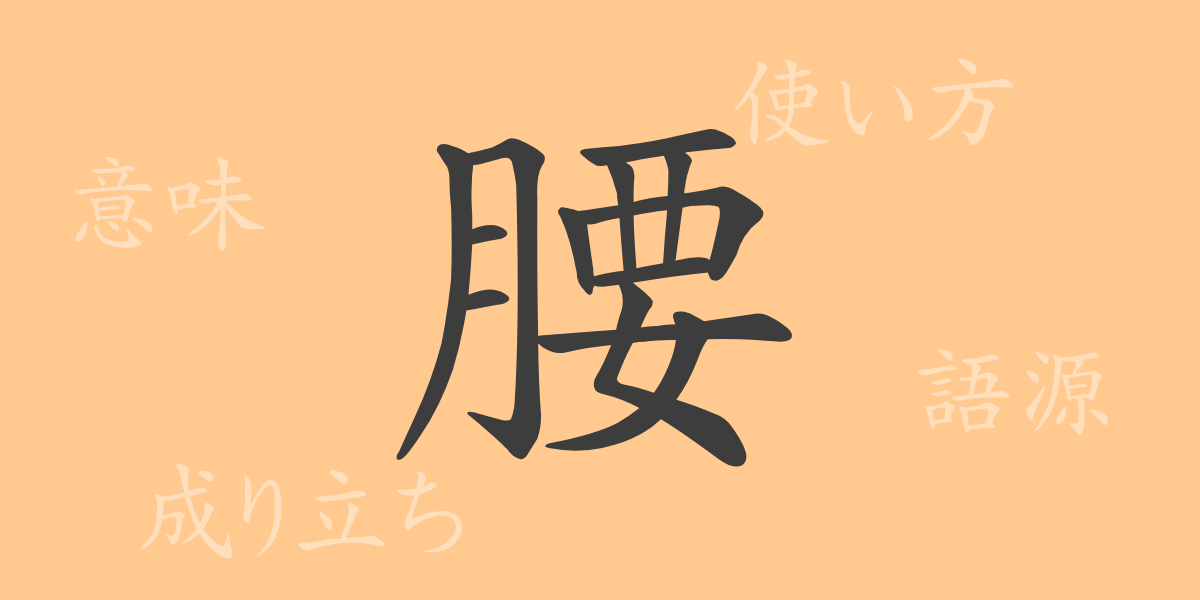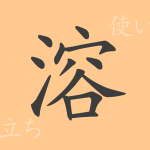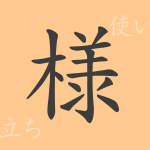Japanese (にほんご) is a language rich in the depth of meaning that a single kanji (かんじ) character can hold, as well as the variety of expressions that can be created with it. The kanji “腰” (こし, koshi) is commonly used to refer to a part of the body, but its usage extends far beyond that, appearing in many idioms and expressions. In this article, we will delve into the origins of “腰” (こし, koshi), its meanings, uses, readings, stroke count, and the expressions that incorporate it. Let’s step into the world of “腰” (こし, koshi), one of Japan’s commonly used kanji.
Origins of “腰” (こし, koshi)
The origins of the kanji “腰” (こし, koshi) are ancient, with its prototype seen in oracle bone script. In ancient China, it was formed by combining the “月” (にくづき, nikuzuki) radical, meaning “meat,” and the “卩” (ふしづくり, fushizukuri) radical, which supports it. This combination evolved into the current form of “腰” (こし, koshi), symbolizing an important part of the human body that provides support.
Meaning and Usage of “腰” (こし, koshi)
While “腰” (こし, koshi) directly refers to a part of the human body, it is often used metaphorically in various contexts. For example, “腰を据える” (こしをすえる, koshi wo sueru) means to focus on something, and “腰が重い” (こしがおもい, koshi ga omoi) means to be slow to start something. Additionally, “腰を折る” (こしをおる, koshi wo oru) means to interrupt something, and “腰が低い” (こしがひくい, koshi ga hikui) refers to having a humble attitude.
Readings, Stroke Count, and Radical of “腰” (こし, koshi)
Although “腰” (こし, koshi) is a commonly used kanji in daily life, opportunities to learn about its readings and components in detail might be surprisingly rare.
- Readings: The on’yomi (おんよみ) reading is “ヨウ” (よう, you), and the kun’yomi (くんよみ) reading is “こし” (こし, koshi).
- Stroke count: The kanji “腰” (こし, koshi) has a total of 13 strokes.
- Radical: The radical is “肉” (にくづき, nikuzuki), which is commonly used in kanji that indicate parts of the body.
Idioms, Expressions, and Proverbs Using “腰” (こし, koshi)
There are numerous idioms, expressions, and proverbs in Japanese that include “腰” (こし, koshi). For example, “腰を上げる” (こしをあげる, koshi wo ageru) is an expression that encourages taking action, and “腰を抜かす” (こしをぬかす, koshi wo nukasu) describes being extremely surprised. In proverbs, “腰を据えて臨む” (こしをすえてのぞむ, koshi wo suete nozomu) signifies approaching something in a planned and determined manner. These expressions derive from the fact that the waist is a key part of the body that provides support, and they are used in various situations.
Summary of “腰” (こし, koshi)
In this article, we have explored the origins, various meanings and uses, readings, stroke count, and idioms, expressions, and proverbs involving “腰” (こし, koshi). The depth of meaning a single kanji can hold and the richness of expressions created with it are among the charms of the Japanese language. Although “腰” (こし, koshi) is commonly used in daily life, it carries a long history and cultural significance. When using expressions that include “腰” (こし, koshi), why not recall its rich meanings?

























